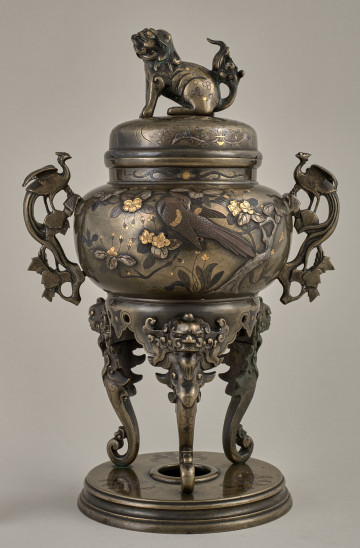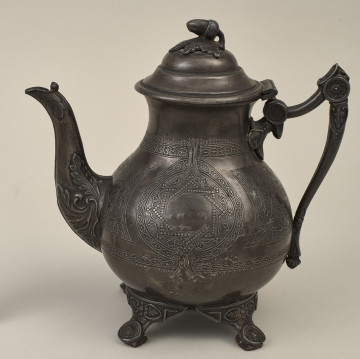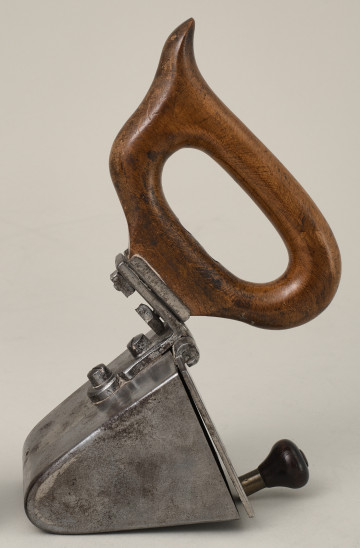
Censer
2nd half of the 19th century
Castle Museum in Łańcut
Part of the collection: Benin court art
The head cast of the Queen Mother (Iyoba) is an example of the court art of the Benin Empire, one of the West African kingdoms that survives and still functions today in Edo State, Nigeria. It was most likely made in the late 18th/19th century during the Late Period of the kingdom. It is evidenced by the large size, weight and the way the Queen Mother is depicted, devoid of personal features. The cast was made of bronze using the lost wax method. It is believed that the head commemorates Queen Ohogha II (crowned in 1752), Ose (1806), or Omozogie (1817 or 1818). Benin court art depicts a hierarchical and patrilineal society organised around the figure of a divine ruler (Oba). The Ere of the Ogiso dynasty started the custom of carving heads and placing them on ancestral altars. At first, they were made of wood, but from the end of the 13th century onwards, they were made of bronze, linked to the introduction of foundry work at court. Artisans specialising in bronze work assumed the highest position among court specialists. The first castings were images of Oba. It changed when the reign of Esigie (1504-1550) commenced. Esigie broke the tradition of killing of the new king’s mother, that had prevailed until his time. He gave his mother Idia the title Iyoba and placed her in the palace at Uselu. After the Queen Mother's death, an altar was erected in her honour in the ruler's residence, and its main element was a bronze cast of her head. The tradition was followed by most of Esigie's successors, resulting in a new figural motif in Benin court art. The Szczecin Iyoba is the only object of this type in the Polish museum resources. It was purchased from a private individual in 1977. The circumstances in which it found itself in Poland remain unknown. One theory assumes that, due to war operations, the cast was moved from the Berlin museum to Silesia, where it was found after the war. Supporting this thesis is images of the trace of an effaced inventory number found inside the cast. Unfortunately, research on the origin of the exhibit did not confirm this thesis.
Katarzyna Findlik-Gawron
Author / creator
Dimensions
cały obiekt: height: 45 cm, width: 23,6 cm
Object type
altar, sculpture
Technique
lost-wax casting; inlay
Material
iron; bronze
Creation time / dating
Creation / finding place
Owner
National Museum in Szczecin
Identification number
Location / status

2nd half of the 19th century
Castle Museum in Łańcut

19th (?) century
Castle Museum in Łańcut

20th century
Castle Museum in Łańcut
DISCOVER this TOPIC
National Museum in Szczecin
DISCOVER this PATH
Educational path